An outstanding player of the early game, Holmes created an upset in the second Men’s Nationals in 1936 when he and his partner, Richard G. Newell, defeated Fess Blanchard and Earle Gatchell at the Field Club in Greenwich 3-6, 8-6, 4-6, 9-7, 15-13 (77 games and the longest on record) after holding 13 match points. To Blanchard’s great dismay, this would be the first—and only—time in the first decade of Men’s Nationals that the event was won by a team not from Fox Meadow Tennis Club.
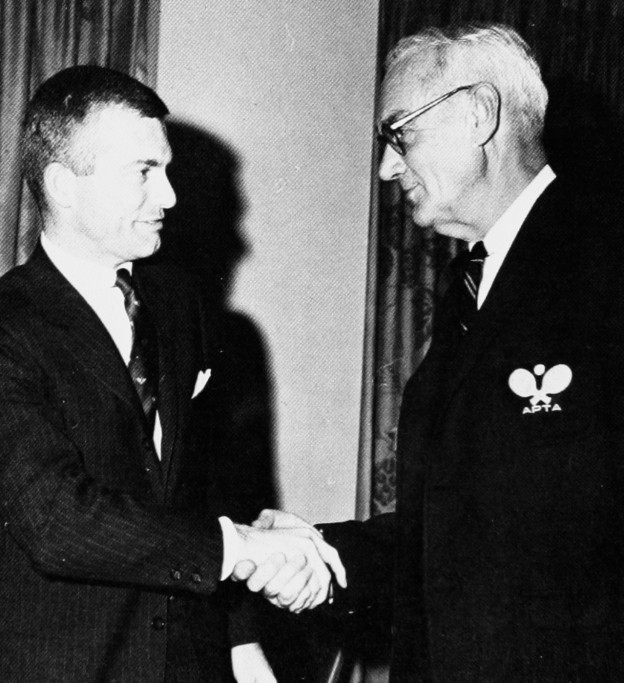
Evans, Donald K.
In the early days, almost anything could happen before the Evans backstop became the standard. By 1932, when Cogswell and Blanchard had managed to lengthen the platform of the original court to 60 x 30 feet (the present standard size), they had found that taking the ball off the backstop had become such an important part of the game, that the backstop rule they had created remained. By that time, the wiring had reached 12 feet in height, and was of one inch mesh, as balls had tended to stick in the larger mesh size originally used. However, they were still plagued with irregular bounces. And, they realized that platform tennis would never develop into a game of skill if luck played such a large part in the bounces off the wiring.
Blanchard went for advice on solving this issue to the member of his group of players using the temporary first court at Fox Meadow most likely to come up with an answer, Donald K. (Don) Evans. Don was known as an imaginative problem solver and he had mechanical and wood-working talent, as he soon demonstrated. His answer was conceived and erected during the winter of 1934-35 on the Cogswell court by Don Evans, with the aid of John G. MacKenty. With the Evans backstop, the future of platform tennis was assured. Before long this new form of backstop became standard for all championship courts, first for the wiring at the ends and later for the side wiring as well, which is the present day configuration.
Donald Kirk Evans was born in White Plains, NY, and his family moved to Scarsdale, NY, when he was five. He attended Scarsdale Elementary School and the Lawrenceville School, NJ, and graduated from Princeton in 1926 with a major in English. After graduating, he worked on Wall Street and eventually became Secretary of the Riegel Paper Company, and Treasurer of Riegel Textile Company. He was a long-time resident of Scarsdale and belonged to Fox Meadow Tennis Club, the New York Yacht Club, and the American Yacht Club, where he was Commodore from 1953-1954. Besides sailing, he designed yachts and was an avid aquaponic gardener. Don retired in 1969 and moved to Bedford, NY, in 1973. He died there in 1987.
Source: Julie Doering (daughter), personal communication 2013
Carlisle, James M.
Carlisle was not a power player but had great defensive skills and won points with precision placements. He was one of the best at getting balls off the backstop and was an expert lobber and low volleyer. His underhand serve looked easy, but was difficult to return with any pace. Some consider that one of his most highly developed skills, although not universally appreciated, was his partner selection. Selections were done early and accompanied by guilt-provoking persuasion, allowing recipients scant time to say anything other than yes.
Serving APTA as Secretary from 1955-57, and as President from 1957-59, Carlisle was known as a man who loved to sing and dance and, at his home club, Fox Meadow Tennis Club, he famously regaled Blanchard and Cogswell at a surprise party celebrating the 25th anniversary of the game with his “Hiawatha” poem. Blanchard described the event in his second book, Platform Paddle Tennis, and dubbed Jimmy the poet laureate.
Carlisle was a meticulous dresser, wearing custom tailored three-piece suits, complete with pocket handkerchief
Ward, Kenneth
The Scrambles tournaments for which he and John Stephenson presided over the draw for many years, made it possible for everyone to experience a tournament victory, rather than it being the monopoly of a few star players. Ward remained an active promoter of the game as a member of the Apawamis Club in Rye, NY.
After graduating from Hotchkiss and Yale, Ward went to work on Wall Street. His daughter, Susan Ward Graf, said her father always stressed that he was a financial analyst, not a stockbroker. In that capacity he wrote for the New York Post, and his financial newsletter was sent regularly to investors. According to another daughter, Robin, Ward went to his office faithfully, almost until his death from emphysema in 1976.
Sports were a high priority. As a member of The Manursing Island Club and The Apawamis Club, both in Ward’s home town of Rye, New York, he could indulge his appetite for tennis, golf and swimming in the summer. Then he’d take up the game he loved, platform tennis, in the winter.
In later years golf became Ward’s passion. The game was often played at Mohonk Mountain House, a Hudson Valley resort in New Paltz, New York, founded by the Smiley brothers. The brothers were close friends of the family. The Kenneth Ward Cup was established by Ward which, not surprisingly, was usually won by him.
Ward had a lively sense of humor and enjoyed dressing accordingly. He was always an addition to the platform tennis scene even after he stopped playing the game.
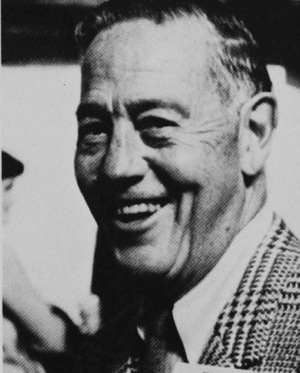
OHearn, Charles M.
When Tom Yawkey bought the Boston Red Sox in the early 1930s, he asked O’Hearn to become the team’s General Manager. Charley turned him down because he wanted a more private life, and that decision had a major impact on platform tennis.
Instead of life in baseball, he became the first of the group of five to start playing platform tennis and, for years, was generally recognized as the best player the game had produced. One of the principal characteristics that made his game stand out was his skill in mixing up his shots so that his opponents seldom knew what to expect. Despite a relatively weak backhand, his speed, his fine low volleys from deep in the court, and his deceptive changes of pace made him one of the finest all-around players in his day.
A native of Brookline, MA, O’Hearn was the youngest of eight children. His father was a general contractor and landscape engineer whose best-known project was installing the field in the new Red Sox Park around 1913, with the help of his son Bill, an MIT civil engineering graduate. The drainage system they installed was so good that for years the natural grass field was considered the best in professional baseball.
Charley graduated from Brookline High School in 1919, where he played football, ice hockey, baseball and tennis and captained the ice hockey and tennis teams. During his senior year, Clarence Parker, the school’s baseball coach, got a job offer to coach baseball and hockey at Exeter. Since Parker hardly knew a puck from a basketball, and ice hockey was one of O’Hearn’s best sports, Parker asked O’Hearn if he would like to go to Exeter for one year and made an offer that O’Hearn could not refuse. At Exeter, Charley played first-string quarterback in football, as well as hockey and baseball and was elected President of the Exeter Yale Club.
After Exeter, O’Hearn attended Yale where he studied administrative engineering etudies and, as he said, “majored” in athletics as he played first-string football, ice-hockey and baseball, starting in his freshman year. After graduating from Yale in 1924, he started work for Goodrich Rubber Company, but then enrolled in the Firestone College Training Program to learn the business and embark on a career in tire sales. His success lead to a fast rise up the Firestone ranks that was interrupted by the 1929-1933 Depression, when a reorganization at the company would have meant a relocation from the metropolitan New York area and a disruption to his married life. As a result, he decided to change career paths and went to work as an account executive with an investment firm in New York City in 1930, securing investment funds. The firm was eventually merged with Scudder, Stevens & Clark in 1942.
In 1951, at the age of 50 he resigned as a partner from Scudder, Stevens and Clark in New York City to become an assistant to the President of Yale University, in charge of fund raising. He new position meant a move to New Haven, CT, and an end to his involvement in platform tennis. The skill, however, remained. Blanchard commented that “when O’Hearn came back to Scarsdale for a weekend early in 1959, after having been away and out of the game for five or six years, I realized when I saw him play again that he should still be ranked with the best.” Charley retired in 1970 and began spending winters in Naples, FL, becoming a full time resident in 1991. He died there in April, 2001 at the age of 99.
Source: Adapted from: Fessenden S. Blanchard, Platform Paddle Tennis 1959, Family history by Charles M. O’Hearn, personal communication from C. Michael O’Hearn
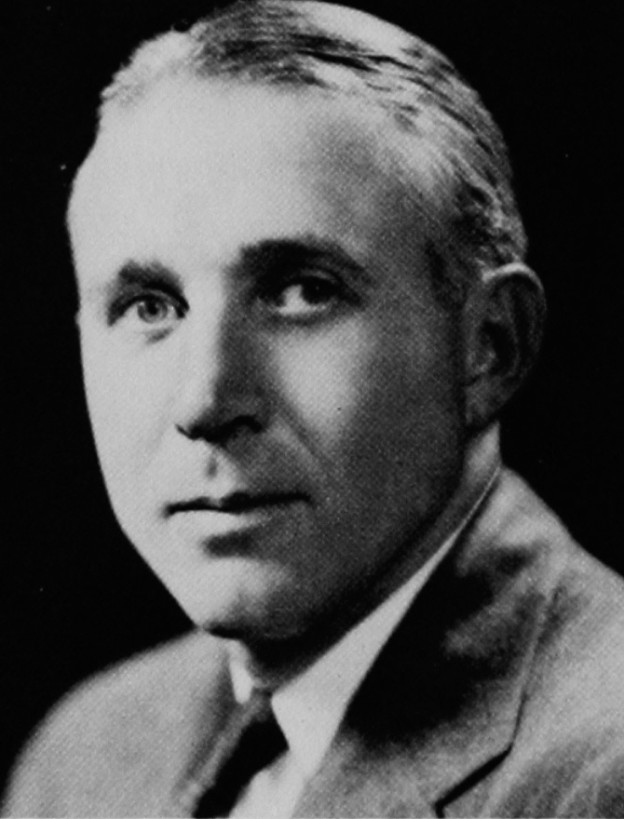
Hynson, James N.
Hanson was born in Lebanon, PA and attended Princeton University where he played on the varsity basketball team and was captain of an outstanding team in his senior year. He continued coaching basketball at Princeton after graduating in 1920. The Hynson family moved to Scarsdale, NY in the early 1920s and lived in a handsome white house abutting Fox Meadow Tennis Club. They became members and he proceeded to win six tennis singles championships during the period 1926-1936 and served as President from 1933-1935, a period when the popularity of paddle tennis was exploding. Hanson was also a member of one of the other founding clubs of the APTA, the Manursing Island Club in Rye, NY. where he was a leading promoter of the game.
Hanson was vice-president of the Lebanon Paper Box Company and a director of Bankers National Life Insurance Company and the Beneficial Loan Society. He also managed his own general investment banking firm J. N. Hynson & Co. in NYC until poor health forced his early retirement in 1940.
His daughter Sally learnt the game with her father at Fox Meadow on weekends when women were technically not allowed on the courts. In tribute to her father she built a paddle court at her home in Maine and named it “Kinfolk” in his memory.
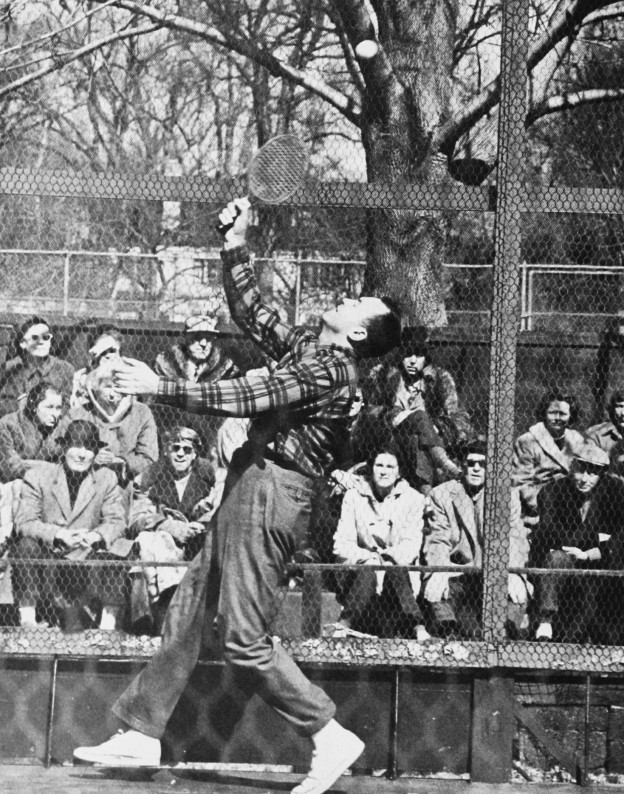
Hebard, Richard K.
Richard K. (“Dick”) Hebard was one of the outstanding players of the game, winning eight National Men’s Championships, and five National Mixed Doubles titles,. He continued to play competitively into his “senior” years, winning the National 50+. He was still winning National titles when he received the Honor Award. He served as APTA Secretary/Treasurer from 1950-1952, and President from 1953-1955, completing the latter term while also serving as President of Fox Meadow Tennis Club from 1954-55. (Fox Meadow Tennis Club)
Hebard was a long-time member of Fox Meadow Tennis Club, in Scarsdale, NY, where he excelled in both tennis and platform tennis. He won the National Boy’s Singles Championship at the age of fourteen. In both tennis and platform tennis, he was a relaxed, classic stylist, and he was highly respected by everyone, both partners and opponents.
“Dick Hebard rarely plays a poor game and is one of the most consistently good players platform tennis has produced. His service is exceptionally good and his other strokes are all first-rate. While he doesn’t use the drop volley as often or as effectively as, for example, Frank Guernsey or Fred Walker, Dick’s overheads are varied in pace and better placed in the corners than those of most of the other good players. His forehands and low volleys are among the best. His greatest asset as a player is an intangible one, but felt, nevertheless, by those who have been his partners: the ability to inspire confidence, to bring out the best in those with whom he plays. As a girl with whom he had won an important tournament expressed it to me: “Dick never looks worried or put out when I am playing badly. He takes it in stride as though he was sure that I’d soon get out of my slump. And, thanks to him, I find that I do get over it and am playing again as well as I know how.” In the national championships Dick has been on the winning team five times in men’s doubles and four times in mixed doubles, a record equaled only by that of Charley O’Hearn, and made against particularly strong competition.”
Hebard attended the Hill School in Pottstown, PA and Springfield College, MA where he also played football and was captain of the basketball team. After serving in the US Navy during WW II, he joined his father’s firm, R. W. Hebard & Co., Inc. in New York City doing business with clients in South America.
Sources: Fessenden S. Blanchard, Platform Paddle Tennis, 1959.
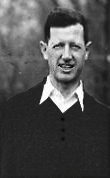
Gatchell, Earle
With partner Fess Blanchard, Gatchell was runner-up in the second Men’s Nationals in 1936. This match is the longest recorded in the history of the sport, and the winners, Harold D. Holmes and Richard G. Newell, won 3-6, 8-6, 4-6, 9-7, 15-13 (77 games) after holding 13 match points.
Many years later Gatchell and partner Ken Ward with a combined age of 128 years won their first round match in the 1959 Men’s Nationals against a far younger team from Massachusetts.
Earle was considered one of the finest screen players of his day and was a frequent umpire at National tournaments.
On a more personal note, Gatchell was known for his casual dress style on the court and became something of a fashion trendsetter. Eventually, this casual look, rather than the elegant attire of players, such as Couch and Kilmarx, who often wore neckties, became the game’s norm.
Gatchell was born in Philadelphia, PA in 1891 and grew up in Rutledge, PA. He graduated from Swarthmore College with and A.B. in 1914 and then served in the Army during WWI, rising to the rank of Captain. After the war he went back to Swarthmore and obtained a degree as a Mechanical Engineer and started working for Central Coal and Iron Co. in Central City, KY.
Shortly thereafter he made a career switch into banking and started his own investment business in New York City where he had associations with North American Securities Co., G. M. P. Murphy and Co., Cohu & Co. before joining F. S. Moseley & Co. as manager of the wholesale department in 1937.
He was with F. S. Moseley for the next ten years with a hiatus from 1942-1945 when he served during WWII in the Army’s Ordinance Department in Washington DC where he was in charge of testing and accepting smokeless powder and high explosives. He was posted to Australia for a period that also included stints in Guadalcanal and the Solomon Islands. On being discharged as a lieutenant colonel he returned to F. S. Moseley.
In 1947 he joined Hayden, Stone & Co. as the manager of the dealer and correspondent department and became a general partner in 1953. He retired in 1961 and died of a heart attach in 1962 while visiting relatives in Philadelphia.
Gatchell originally lived in New York City when he started his investment career but had move to Scarsdale NY in 1925 and became involved with the early development and promotion of the game as a member of the Old Army Athletes (he lived down the hill from Cogswell on Lynwood Road) and later at Fox Meadow Tennis Club where he was very active in the club’s paddle and tennis programs. As a Mechanical Engineer he was an excellent addition to the Cogswell team building the first court on Old Army Road and in subsequent court improvements. The Gatchell family moved from Scarsdale to West Chester, PA during the period that Gatchell was posted overseas but they moved back upon his honorable discharge. Outside of paddle he was active in the Scarsdale Boy Scouts and local operetta with a particular love of Gilbert and Sullivan.
Historical Factoid: During the early part of his banking career he wrote an article for The Survey entitled “A Bank for Students” which laid out the need for financial aid for college bound students and proposed a framework for providing a solution. Shortly thereafter the Harmon Foundation adopted a trial program essentially along the lines laid out by Gatchell. It is likely that the Student Aid programs we have today have their roots in this ground-breaking concept. In addition to working with the Harmon Foundation which had a strong emphasis on helping African-Americans, Gatchell also was active on a Committee for Inter-racial Cooperation in 1930./small>
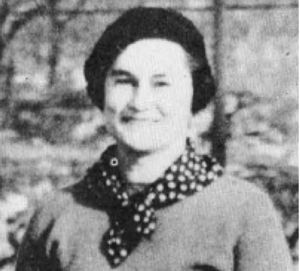
Fuller, Kitty
When not playing, she was an enthusiastic and discerning spectator and Blanchard believed the game owed a great deal to her. When Blanchard showed what he had written about her to an old friend of hers and his, the friend said, “Be sure to say that Kitty is a wonderful sport.”
Fuller was the daughter of William Mitchell Lewis who was one of Racine, WI early industrialists and head of Mitchell Lewis Motor Company. She married Percival Strong Fuller in Racine in 1919 and by 1928 the had moved to White Plains, NY. Later on they moved into Scarsdale NY where she lived until her death.
Fuller’s daughter, Lois, married Richard Hebard in January 1948.

Couch Jr., Clifford D.
Born an only child in Peekskill, NY, in 1901, his father was the president of a local county bank and his mother was an exceptional cook. He graduated from Peekskill High School and Dartmouth College in 1923 where, among other things, he served as manager of the football team, played on the tennis team, and was voted “most likely to succeed” by his classmates.
Kip married Helen Hendrickson from Vassar (class of 1924), in 1926, and they went on to live in Scarsdale for most of their married life. Fox Meadow Tennis Club became Couch’s second home, where he was very active in the platform tennis program starting from the early days when the first court was built in 1931. There were many freezing Saturday afternoons when he helped shovel the snow off the courts before playing six sets of paddle, often with Charley O’Hearn. Afterwards he would join his family in front of the fire at the Fox Meadow Club for hot chocolate served by the elder ladies of the club.
Among the best of the players in the early APTA championships, Kip Couch was once called, by George Trevor of the Sun, “the stylist of the paddle tennis realm with effortless stokes as fluent as Tilden’s.” Couch’s hard, fast-dropping forehand was very difficult to successfully volley. He was a winner in two men’s doubles championships, first with partner and previous Dartmouth tennis teammate Summer D. Kilmarx, over James N. Hynson and Charles M. O’Hearn in 1935 and 1939, and, later with former opponent O’Hearn over Rawle Deland and John R. Moses in 1948. Couch and his wife, Helen, were also finalists in the first Mixed Nationals in 1935.
Kip Couch’s love of the game was handed down through the generations and this helped grow interest in paddle regionally. His daughter, Prill Couch Meyer, grew up learning both tennis and paddle at Fox Meadow under the patient eye of her father. She went on to teach paddle in Greenwich, CT, for ten years at the Village Recreation Department in Greenwich She and her three children would rather play paddle than any other sport. Couch’s granddaughter, Hendy Meyer Dayton, currently serves on the Board of APTA as Region VI President, and promotes the game on the West Coast. Grandsons Kip Meyer and Christian Meyer and their families are very active players in Fairfield County, CT, and Concord, MA, respectively.
After graduating from Dartmouth in 1923, Kip worked with the Hofstatter & Co. in New York City until 1940, when he joined Celanese Corporation in Washington, DC, as a sales manager. After World War II, he had a stint at Atlas Powder and then became the VP for sales at Pantasote Company.
After living in Scarsdale, NY, for 42 years, Couch retired to Bridgehampton, Long Island, NY in 1969, where he was perceived as a “gentleman farmer” living in quiet splendor among the potato fields. But, in fact, he was actively involved in the Eastern Long Island Division of the American Red Cross, where he held a number of positions, including chairman. He was always offering his hand to all newcomers of all ages at the Bridgehampton Club saying “hello, I’m Kip Couch.”



